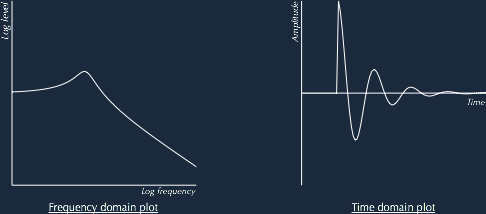The
idea
Frequency domain synthesis
is a novel synthesiser architecture, based on some rather
old technology. Ever since they were first invented,
electronic synthesisers have been touted as 'able to
produce any sound you could ever hear', but this is
an ambitious goal, and few synthesiser designs have ever
come close.
The Frequency Domain Synthesiser is
intended to be a small step in the right direction, made by
going back to first principles. Most digital
synthesisers operate in the time domain, processing
individual audio samples one after the other. This
synthesiser operates in the frequency domain, manipulating
descriptions of the sound's spectrum, updating these
descriptions in real time to respond to performance
controls, and only at the last moment passing them to an
output unit for rendering into audio samples.
The underlying technology of frequency domain synthesis is
related to additive synthesis, but the 'user model' has a
different emphasis.
Often, the motivation for additive synthesis is to produce
an arbitrary waveform, which is then processed in the time
domain, just like the output of any other kind of
oscillator. The motivation for frequency domain
synthesis is simply that your ears do not register
waveforms at all, but instead analyse each sound according
to how energy is distributed among frequencies. Let's
use an analogy - the web page you are looking at now is
being brought to you by a form of additive synthesis, in
which the colours of the background and text are
synthesised by mixing together various amounts of red,
green and blue. This is not done because red, green
and blue pixels can produce every possible colour, but
because the receptors in your eye break every colour down
into components using those three primary colours.
Where frequency domain synthesis differs from additive
synthesis in in the provision, through a collection of
plug-in modules, of a set of high level tools for
describing the sound and manipulating that description in
real time. In terms of our analogy: while it is
possible to specify the individual components of every
pixel on this web page by hand, it is much easier to use
high level drawing and painting tools. So too,
producing a static description of a sound with additive
synthesis might require you to dial in hundreds of
parameters; making it respond to performance controllers in
a useful way might require even more. With frequency
domain synthesis, you use modules to describe how high
level parameters should affect the sound in as much - or as
little - detail as you wish.
In fact, using the frequency domain to describe sounds is
so natural that many time domain synthesisers use it, but
only as deep as the printing on the front panel.
Below are two pictures which describe the same resonant
low-pass filter. One picture shows the filter's
response in the frequency domain, and the other in the time
domain. Which one do you recognise?

The frequency domain synthesiser represents an attempt to
put these ideas into practice.
Naturally, it includes a full complement of frequency
domain equivalents of familiar
filters,
equalisers, ring
modulation and
FM, and even a
vocoder. Besides these are modules oriented towards
mathematical operations - if you use these to model
resonators such as pipes and strings, you have a frequency
domain counterpart to waveguide modelling synthesis.
There are also modules that let you sketch out more
complex functions, such as the frequency response of a
violin soundboard, with the mouse. And, since it has
its own plug-in interface, the synthesiser can be augmented
with new modules at any time. Frequency domain
synthesis combines, in a unified model, the flexibility
usually associated with modular synthesisers with the
ability to generate detailed sounds usually associated with
modelling synthesisers.
